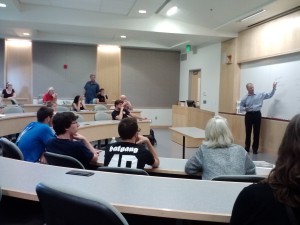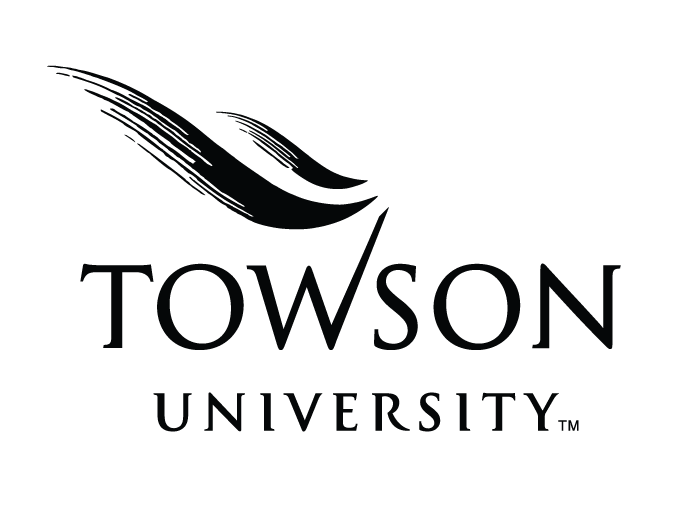Towson University alumnus and former CIA analyst William Richardson ’81/’82 returned to campus for the College of Liberal Arts‘ “What Matters” speaker series, sharing with students, faculty and others some of his experiences as a specialist in foreign intelligence who regularly briefed both Vice President Al Gore and President Barack Obama.
“I kind of knew what I was getting into and I kind of didn’t,” Richardson told the group about when he was hired in 1982, after earning his master’s degree in geography from TU. “What I didn’t know was that I was joining a group that really put their mission and country above themselves.”

Former CIA analyst William Richardson ’81/’82 speaks to students and others in CLA “What Matters” speaker series
The United States was in the midst of the Cold War with what was then the USSR. Richardson, familiar with essential concepts like imagery, remote sensing and cartography, soon became an all-source analyst in the Office of Soviet Analysis. He traces that achievement to his experience at Towson, where his first geography class showed him how physical and cultural space directly affects world relations. The realization provided Richardson with specific, strategic ways to see previously intangible concepts.
“If you’re doing analysis of a problem, you can’t forget about geography,” he said. “All you have to do is take one look at the Golan Heights [occupied by Israel and Syria] and you see why geography matters—particularly if you’re looking up at the Golan Heights.”
Through an understanding of mapping, geographic information science and other areas, Richardson became a trusted resource for the White House. In 1994, Vice President Al Gore asked the CIA for an assessment of “societal stress” in countries around the world. Richardson and his team had limited time to come up with a methodology and a ranking for each nation, to aid the administration’s approach to foreign assistance.
“This is where it all came into focus for me from my academic time,” Richardson said.
His success on that project and others led him to become the vice president’s daily briefer, one of the most sought-after positions in his profession. He later spent a year briefing President Obama. He ties that work to the need for critical thinking, research and writing skills; briefs must incorporate well-argued, well-supported stands on mission-critical regions in relatively few words.
“[When] it’s a policymaker or a president, if you can’t provide analysis in a page or a page and a half, they won’t read it,” Richardson said frankly. “They don’t have time to turn the page.”
Increasingly essential to Richardson’s line of work, he said, is language expertise that demonstrates an understanding of a people’s culture. Studies of specific regions support expertise. Personal characteristics like inquisitiveness and a desire to truly understand and then solve a problem are foundational, as well.
Those who want to learn more from Richardson’s experience will have their chance in the spring term, when he teaches a course in crafting intelligence briefings.
But not all of Richardson’s advice was specific to international intelligence analysis. He told students to find ways outside of their assignments to deepen their understanding of their interests and learn about the histories of the companies or businesses in which they want to work. He also advised them to gain work experience before they walk into their first full-time job, so they have some practical professional skills like teamwork and relationship management.
“I was dealing with customers,” Richardson said, relating his intelligence career to his teenaged years in retail. “They happened to be in the White House. They happened to be in the State Department and the Pentagon.”
For obvious reasons, the former CIA analyst could not share much of what he knows about recent world events. But he told the audience that a new world map on a CLA building wall resonated with him. The map’s projection puts the North Pole at the bottom.
“The world really is upside-down,” Richardson said. “Never in my experience have there been so many hotspots across the globe.”
